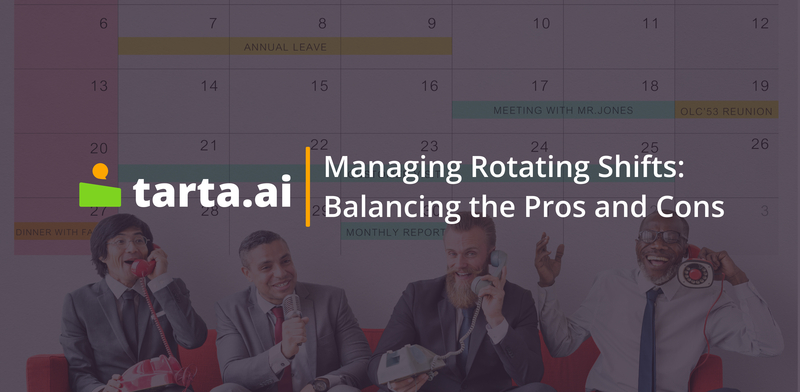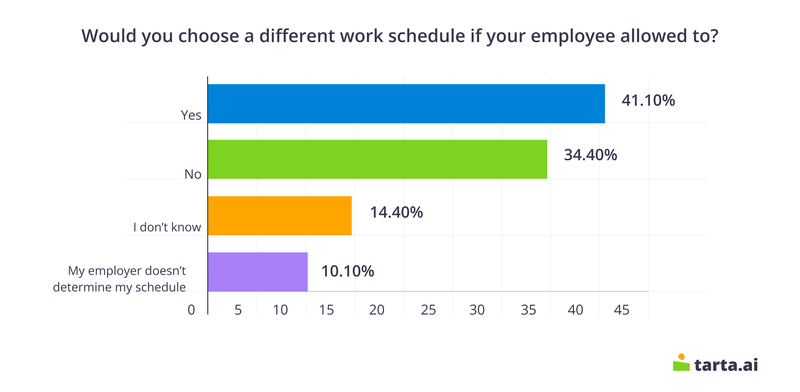Managing Rotating Shifts: Balancing the Pros and Cons

Rotating shifts are a work schedule that involves employees working different shifts on a regular basis. This type of schedule is commonly used in industries that require 24/7 operation, such as healthcare, manufacturing, and public safety.
Rotating shifts can be challenging for employees, as it can disrupt their sleep patterns, social life, and overall health. In this article, we will explore the pros and cons of rotating shifts, and provide some tips on how to manage this type of work schedule.
Types of Rotating Shifts
There are different types of rotating shifts, such as forward rotating shifts, backward rotating shifts, and rotating shifts with fixed days off. Forward rotating shifts involve moving from day shift to evening shift to night shift, while backward rotating shifts involve moving from night shift to evening shift to day shift. Rotating shifts with fixed days off involve employees rotating between different shifts, but always having the same days off.
76% of workers surveyed report being either “satisfied” or “very satisfied” with their work schedules.
Examples of rotating shift schedules
- DuPont Shift Schedule: This schedule requires working 12-hour shifts for four consecutive days followed by four days off. The cycle repeats every seven days, with employees rotating between day and night shifts.
- Pitman Shift Schedule: This schedule involves working eight-hour shifts for five consecutive days followed by two days off. The cycle repeats every seven days, with employees rotating between morning, afternoon, and night shifts.
- 4-on/4-off Shift Schedule: This schedule requires working 12-hour shifts for four consecutive days followed by four days off. The cycle repeats every eight days, with employees rotating between day and night shifts.
- Continental Shift Schedule: This schedule involves working eight-hour shifts for seven consecutive days followed by seven days off. The cycle repeats every 14 days, with employees rotating between morning, afternoon, and night shifts.
- Panama Shift Schedule: This schedule requires working 12-hour shifts for two consecutive days followed by two days off. The cycle repeats every eight days, with employees rotating between day and night shifts.
Note that there are many other shift schedules used by different industries and organizations, and the specific schedule used can vary depending on factors such as the nature of the work, the number of employees, and organizational preferences.

According to a QuickBooks Time work schedule survey
Pros of Rotating Shifts
- Increased Flexibility: Rotating shifts provide employees with more flexibility in terms of scheduling. This can be beneficial for those who have personal obligations during regular working hours, or those who prefer to work at night.
- Reduced Boredom: Rotating shifts can help employees avoid boredom and monotony, as they are not doing the same thing every day.
- Increased Variety: Rotating shifts allow employees to experience different work environments and interact with different co-workers.
- Higher Pay: In some industries, rotating shifts can come with higher pay rates, as employers may offer a shift differential to compensate employees for the inconvenience of working non-traditional hours.
Cons of Rotating Shifts
- Disrupted Sleep Patterns: Rotating shifts can disrupt employees’ sleep patterns, as they may need to sleep during the day and work at night. This can lead to fatigue, irritability, and health problems.
- Social Life Disruption: Rotating shifts can make it difficult for employees to maintain a social life, as they may be working during the hours when their friends and family are available.
- Difficulty with Childcare: Rotating shifts can be challenging for employees with children, as they may need to find childcare outside of traditional hours.
- Safety Risks: Rotating shifts can also increase the risk of accidents and mistakes in the workplace. Fatigue and reduced alertness can impair employees' cognitive function and reaction times, leading to errors and accidents.
Did you know?
Studies have shown that shift workers are at a higher risk of developing sleep disorders, cardiovascular disease, diabetes, and obesity.
Tips for Managing Rotating Shifts
- Establish a Regular Sleep Schedule: Try to establish a regular sleep schedule, even on days off. This can help regulate your circadian rhythm and improve sleep quality.
- Create a Relaxing Sleep Environment: Make sure your sleeping environment is dark, cool, and quiet. Use blackout curtains, a white noise machine, and earplugs to block out noise and light.
- Stay Active: Exercise regularly to help reduce stress and improve overall health. Try to exercise at the same time each day, even if you are working a night shift.
- Eat a Healthy Diet: Eat a healthy, balanced diet to help maintain energy levels and reduce the risk of health problems.
- Take Regular Breaks: Take regular breaks during your shift to help reduce fatigue and improve alertness.
- Communicate with Your Employer: If you are having difficulty with your rotating shift schedule, communicate with your employer. They may be able to make accommodations or offer additional support.
Employers' Responsibilities
Employers have a responsibility to ensure that their employees are safe and healthy while working rotating shifts. This includes providing adequate rest breaks, scheduling shifts in a way that minimizes the risk of fatigue, and offering training on how to manage the challenges of rotating shifts.
Legal Requirements
In some countries, there are legal requirements regarding working hours and rest periods for employees working rotating shifts. Employers may be required to provide additional pay, rest breaks, or time off to compensate for the challenges of working non-traditional hours.
In conclusion, rotating shifts can be challenging for employees, but they also offer increased flexibility, variety, and higher pay. If you are working a rotating shift, it is important to establish a regular sleep schedule, create a relaxing sleep environment, stay active, eat a healthy diet, take regular breaks, and communicate with your employer. By following these tips, you can help manage the challenges of rotating shifts and maintain your overall health and well-being.
- Rotating shifts are a work schedule that involves employees working different shifts on a regular basis, commonly used in industries that require 24/7 operation.
- There are different types of rotating shifts, such as forward rotating shifts, backward rotating shifts, and rotating shifts with fixed days off.
- The pros of rotating shifts include increased flexibility, reduced boredom, increased variety, and higher pay rates in some industries.
- The cons of rotating shifts include disrupted sleep patterns, social life disruption, difficulty with childcare, and safety risks.
- Tips for managing rotating shifts include establishing a regular sleep schedule, creating a relaxing sleep environment, staying active, eating a healthy diet, taking regular breaks, and communicating with your employer.
- Employers have a responsibility to ensure that their employees are safe and healthy while working rotating shifts, and there may be legal requirements regarding working hours and rest periods for employees working rotating shifts.
FAQ
What are the disadvantages of rotational shifts?
The primary disadvantage of the rotating shift is that employees may prefer to have a consistent schedule.
What is the purpose of rotating shifts?
Rotating shift schedules give everyone an equal chance to work on preferred or less preferred days and shifts.
Which industries use rotating shifts?
Some of the common industries that implement rotating shifts are: manufacturing, healthcare,
transportation, retail employees, hospitality.
Why is a rotating shift required?
Industries such as transportation, manufacturing, hospitality, customer service, construction, etc., usually require staffing outside the traditional 9-to-5 schedule. These organizations rely on rotating shifts to meet their staffing demands.